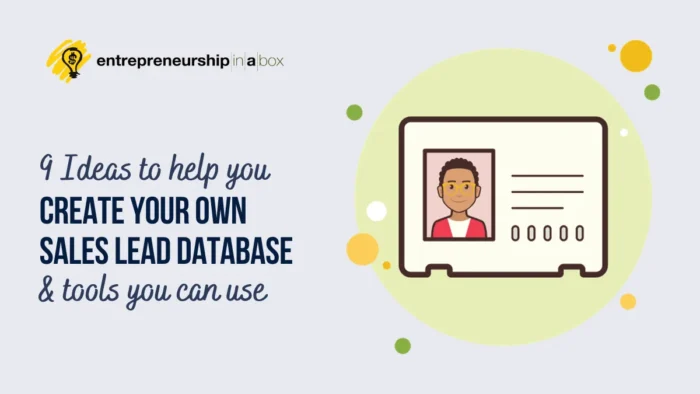Blogs are an invaluable marketing tool that often gets overlooked in the age of social media. However, this communication platform offers SEO benefits, useful long-form information, and content that is ripe for repurposing. A blog and blogging campaign acts as an excellent landing page for building brand awareness and capturing leads.
Creating an effective blogging campaign requires reflection and planning. Here are some key considerations when using this important resource to generate leads for your business.
The Importance of Blog Campaigns for Lead Generation
Blog campaigns have long been an effective way for brands to build awareness and capture qualified leads for the sales funnel and future marketing efforts.
“With the optimization of our blogging campaign, we’ve generated more warm leads, i.e., our blog assisted our business in maximizing the conversions,” say marketing specialists at Front Signs, a U.S.-based signage company.
While many marketers are shifting their focus to social media, those with ample resources should consider a multi-faceted approach. Social media is limited by algorithms and link limitations, while blogs are more malleable. Furthermore, having a functional blog campaign is invaluable to capture prospects who click through a URL on social media to see what else a brand can offer them.
Related: Unlocking the Secrets to Lead Generation: A Beginner’s Comprehensive Guide
Identifying Your Target Audience
The first step in creating an effective blogging campaign is clarifying the target audience. This step goes beyond basic demographics and requires a deep dive into the ideal customer’s needs, motivations and values to create alignment.
Clarifying the target audience not only helps brands cater their messaging to increase its effectiveness but also answers an integral question: what problem does the customer have that you can solve? The answer to this question helps brands generate content ideas (for both blogs and social) and craft compelling lead magnets.
Creating a Compelling Lead Magnet
A lead magnet is the connection piece that turns website visitors into qualified leads. It’s an offering that encourages a lead to share their email address in return for something of value — a non-monetary transaction that secures their place in the sales funnel.
Some effective lead magnets include:
- A discovery call
- An e-book
- A workbook
- A checklist
- Resource libraries
- Templates
- Courses
- Access to a private community
The secret to choosing an effective lead magnet is understanding the immediate problem your audience is facing and offering a solution. Ideally, this will be a taste of the benefits you can offer in the long run, should your lead decide to become a customer.
Incorporating a Strong Call-to-Action
A call-to-action (CTA) is the tipping point for an effective blog campaign. The effectiveness of CTA ties into the Perceptual Set Theory, a psychological theory about how the mind processes information. In essence, a CTA pushes through the monotony and leaves no room for doubt or interpretation about what’s expected. It could be as simple as “click here” or “sign me up.”
The CTA for your lead magnet or other relevant content should be interspersed throughout your content. Have buttons with a contrasting color, use bold hyperlinks, and cater your CTA to find the most effective approach based on your click-through rate (CTR).
Choosing the Right Pop-Up
One of the challenges many businesses face when creating a blogging campaign is knowing which pop-up to use. Pop-ups are largely seen as a nuisance to modern consumers — it can be challenging to find one that’s viewed as convenient, rather than invasive.
The “hello bar” is a subtle pop-up that shows up at the top of the screen without interrupting the viewer’s experience. Many marketers are opting for more passive options like this one. Sidebars and in-line blocks are also effective ways to capture a lead without creating a negative emotional response.
Engaging the Audience
Another vital aspect of an effective blogging campaign is to engage the audience by responding to comments. Set aside time each day to respond to comments and put a human face to the business. Responding shows that your brand values its audience, building the foundation for a strong rapport.
Take this response as an opportunity to incorporate a CTA that drives your audience to relevant content. For example, if your lead magnet is a white paper on the subject, add a link to your response that drives them to your landing page.
Creating a Blog Outreach Plan
Even though blog campaigns are quite different from social media campaigns, there’s room for overlap. You can improve your campaign’s reach by enlisting other bloggers and influencers to help. Influencer marketing has revolutionized public relations and marketing initiatives. According to one study, “It is evident that social media influencer marketing has, in fact, changed the way brands interact with consumers in a positive way.”
Start by researching influencers and bloggers that fit your niche, but aren’t in a competitive role with your brand. Keep in mind that nothing comes free in life, and you’ll need to showcase value when taking this route. Make an effort to engage them, by interacting with their content and sparking conversations. Avoid using bots and canned content, taking a human approach instead.
When the time is right, send a personal message to make the ask. Again, highlight the value of a partnership and remain open to feedback.
Developing a Clear Sales Funnel
These crucial considerations will help you create an effective blogging campaign, but the campaign itself is just a part of the puzzle. It’s also essential to consider where your leads will go from there. How will you convert them into paying customers?
Consider drafting up a visual representation of your sales funnel, outlining what happens after someone receives a lead magnet and shares their contact information. This funnel could include a rudimentary email marketing flow that develops and branches out over time. The idea is to set actionable goals and outline the path from point A to point Z to make your campaign effective and measurable.
Final Thoughts
A blogging campaign is an effective way to generate leads that you can nourish and convert into paying customers. Set actionable goals, tackle the must-do actions on this list, and use your analytics to adapt to your ideal audience. With time and intention, you’ll see measurable results.



